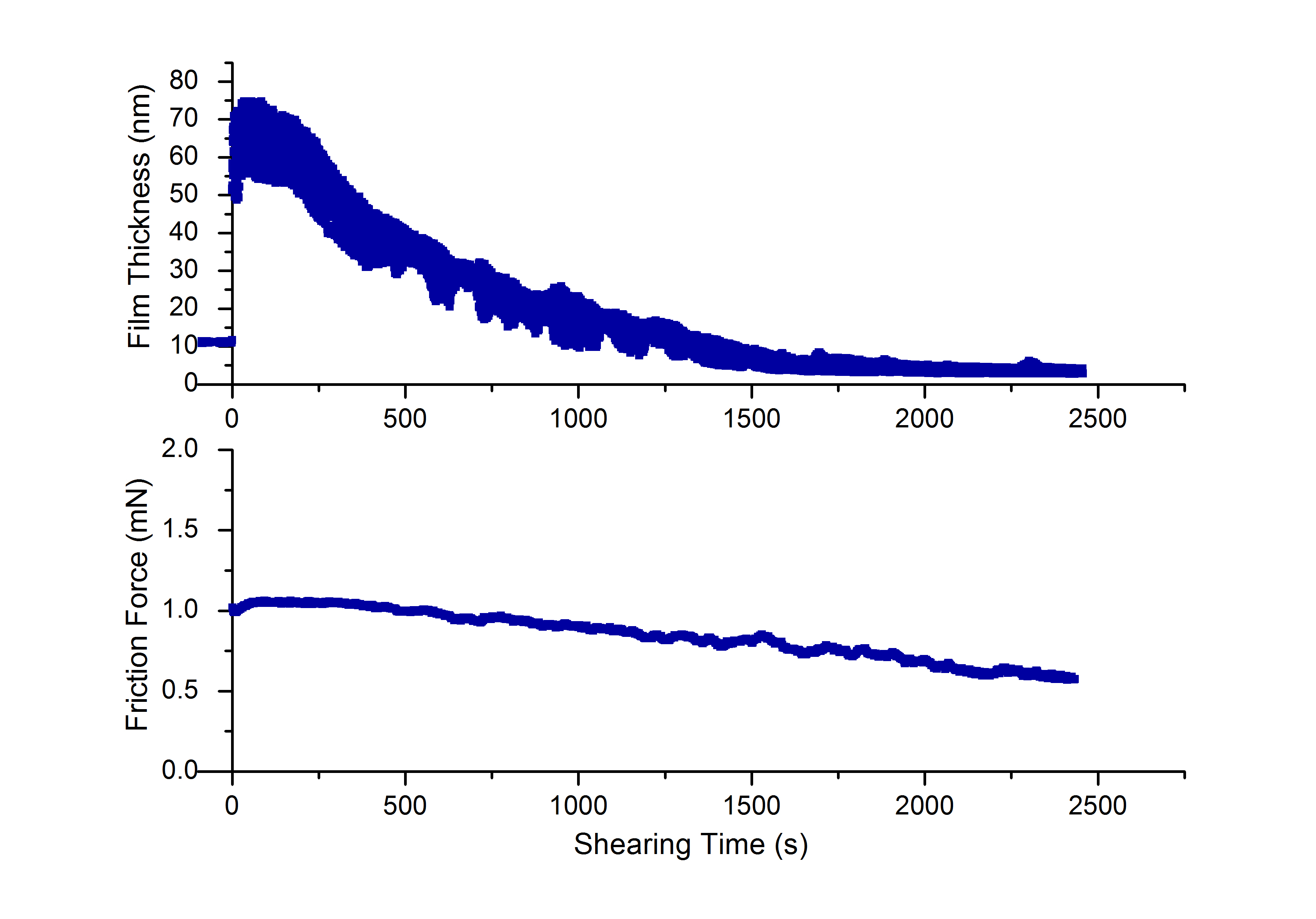Shearing as a mechanism for lamina splendens formation
-
1
Cornell University, Materials Science and Engineering, United States
Introduction: The amorphous surface layer of the superficial zone of cartilage is the lamina splendens (LS). The LS functions as the load-bearing layer when articular joints are sheared and marks the interface between the cartilage surface and the synovial fluid (SF). The LS comprises higher concentrations of the same components as SF and it was recently proposed that it is formed by shear-induced aggregation of SF components [1]. Here we use a Surface Forces Apparatus (SFA) to investigate the effects of applied load, shearing speed, and loading pattern on LS formation. Furthermore, we discriminate between the roles of surface-bound SF and SF from the synovial sac (present in the medium) in LS formation.
Materials and Methods: The SFA can simultaneously measure the separation distance and normal forces between opposing surfaces with 1 nm and 1 µN resolution, respectively. When the surfaces are sheared, the SFA measures the resulting friction forces with 100 µN resolution. In our experiments, SFA mica surfaces were coated with fibronectin, a protein present at the cartilage surface and reported to tether SF components to mica [2]. The surfaces were then coated with SF and sheared either in PBS or in SF. Besides friction forces, film thickness and refractive index were also monitored to correlate lubrication with structural changes in the film. Additionally, normal forces were collected before and after shearing to detect any permanent thickening/aggregation of SF components attributed to gel formation.
Results and Discussion: Our results indicate the formation of a shear-induced ‘gel’ layer which depended on shearing speed, initial loading, and shearing medium. While permanent film thickening was measured during low-load, low-velocity shearing in both PBS and SF media, transient film thickening was observed under all other conditions (see Figure 1). This transient film thickening did not result in wear or increased friction, suggesting that once the ‘gel’ initially formed, its thickness did not further impact friction. Associated local increase of refractive index in the sheared film indicated aggregation of SF constituents. At high shearing velocities, although no wear was observed when surfaces were sheared first at low load then at high load, damage eventually occurred when sheared directly at high load. This implies that low velocity and/or incremental loading are necessary to form a sustainable lubricating gel. Lastly, the presence of SF in the medium resulted in overall thicker films but did not improve lubrication or wear protection suggesting that cartilage-bound SF (rather than SF from synovial sac) plays a predominant role in LS formation.
Conclusions: Our findings suggest that shear is likely responsible for the formation of a LS-like gel in joints. This result is exciting because it reveals that the LS is highly adaptive, forming in joints to absorb shock only when needed.

Figure 1. Representative film thickness and friction force measured over time when SF coated mica surfaces were sheared across PBS. Data were recorded under low-load and high-velocity shearing conditions, exhibiting transient film thickening accompanied by decreasing friction.
We would like to thank the Fortier Laboratory at Cornell University for providing the synovial fluid used in these experiments.
References:
[1] Banquy, X.; Lee, D. W.; Das, S., Hogan, J.; Israelachvili, J. N. Shear-induced aggregation of mammalian synovial fluid components under boundary lubrication conditions. Adv. Funct. Mater. 2014, 24: 3152–3161.
[2] Andresen Eguiluz, R. C.; Cook, S. G.; Brown, C. N.; Wu, F.; Pacifici, N. J.; Bonassar, L. J.; Gourdon, D. Fibronectin mediates enhanced wear protection of lubricin during shear. Biomacromolecules 2015 16 (9): 2884–2894.
Keywords:
bioinerface
Conference:
10th World Biomaterials Congress, Montréal, Canada, 17 May - 22 May, 2016.
Presentation Type:
Poster
Topic:
Interfacial phenomena
Citation:
Cook
S,
Brown
CN,
Pacifici
NJ and
Gourdon
D
(2016). Shearing as a mechanism for lamina splendens formation.
Front. Bioeng. Biotechnol.
Conference Abstract:
10th World Biomaterials Congress.
doi: 10.3389/conf.FBIOE.2016.01.00365
Copyright:
The abstracts in this collection have not been subject to any Frontiers peer review or checks, and are not endorsed by Frontiers.
They are made available through the Frontiers publishing platform as a service to conference organizers and presenters.
The copyright in the individual abstracts is owned by the author of each abstract or his/her employer unless otherwise stated.
Each abstract, as well as the collection of abstracts, are published under a Creative Commons CC-BY 4.0 (attribution) licence (https://creativecommons.org/licenses/by/4.0/) and may thus be reproduced, translated, adapted and be the subject of derivative works provided the authors and Frontiers are attributed.
For Frontiers’ terms and conditions please see https://www.frontiersin.org/legal/terms-and-conditions.
Received:
27 Mar 2016;
Published Online:
30 Mar 2016.